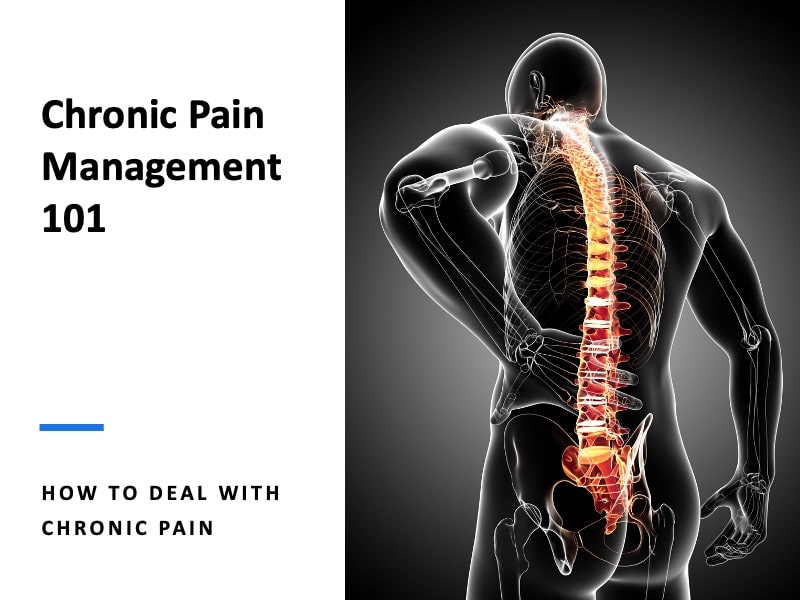Chronic Pain Management 101: How to Deal with Chronic Pain
Living with chronic pain can feel like fighting an invisible battle every day.
Whether it stems from a past injury, a medical condition, or a seemingly unexplained source, chronic pain often persists for months or even years—impacting everything from sleep quality and physical function to emotional well-being and relationships.
I’m no stranger to chronic pain.
After more than a decade playing professional basketball around the world, my body has taken its fair share of punishment.
Throughout my career, I’ve dealt with recurring injuries to my back, feet, ankles, and shoulders—each one leaving behind some level of wear and tear that never completely goes away.
For years, I was fortunate to avoid serious knee or hip problems—two of the most common sources of chronic pain for athletes.
But that changed in December 2024 when I was in a car accident that resulted in a torn meniscus.
I underwent a full meniscus repair, and it was my first time dealing with post-surgical knee pain and the long recovery process that comes with it.
These experiences have shaped the way I approach chronic pain management, both in my own life and in the advice I give to others.
I’ve learned that chronic pain relief rarely comes from a single treatment—it’s the result of layering different strategies that target the mind, body, and environment.
Whether you’re an athlete, a weekend warrior, or someone simply trying to move through daily life without constant discomfort, there are real, effective ways to manage chronic pain and reclaim control over your body.
From my experience and evidence-based research, chronic pain management is not about finding a quick fix.
It’s about building a comprehensive, sustainable plan that addresses the physical, emotional, and lifestyle factors that influence pain perception and intensity.
For many people, real chronic pain relief comes from a multifaceted approach that goes beyond medications or rest alone.
From evidence-based therapies like physical rehabilitation and electrical nerve stimulation to holistic interventions such as mindfulness, dietary adjustments, and acupuncture, the path to effective chronic pain relief is as individualized as the person experiencing it.
While surgery and opioids may still play a role in certain cases, modern pain science points to a much broader—and often safer—toolkit for managing long-term discomfort.
In this guide, we’ll explore diverse, research-supported options to help reduce pain levels, restore function, and reclaim control over your life.
Whether you’ve recently been diagnosed or have been searching for chronic pain solutions for years, these insights can offer a practical, empowering roadmap to improve your quality of life.
What is Chronic Pain?
Chronic pain is defined as pain that persists for more than three months, extending beyond the normal healing period of an injury or illness.
It may come and go or remain constant, ranging from mild discomfort to debilitating agony.
Unlike acute pain, which typically serves a protective purpose, chronic pain often lingers without a clear or ongoing cause.
This type of pain can affect nearly any part of the body—commonly the back, neck, joints, nerves, or head—and it may occur alongside conditions like arthritis, fibromyalgia, migraines, or past injuries.
In many cases, chronic pain exists without visible signs of damage, making it frustrating for both patients and clinicians.
Because chronic pain is not just a symptom but a condition of its own, effective chronic pain management requires a personalized, multifaceted approach.
Successful chronic pain relief strategies often combine physical therapies, mental health support, lifestyle modifications, and sometimes medical or interventional treatments.
Why is Chronic Pain so Complex?
The complexity of chronic pain lies in how it embeds itself into your physical and psychological state.
Pain can become centralized in the nervous system, meaning the brain continues to receive pain signals even in the absence of tissue damage.
This makes chronic pain management more challenging, as it requires treating not just the body, but also the pathways that amplify or distort pain perception.
Additionally, chronic pain is highly individual.
Two people can have the same injury or condition but experience vastly different pain levels and limitations.
Genetics, sleep quality, mental health, stress, nutrition, and physical activity all influence how pain is felt and how well it responds to treatment.
Understanding the biological and emotional layers of chronic pain is essential for finding relief.
Without this deeper awareness, treatments often miss the mark or fail to produce lasting results.
That’s why chronic pain relief strategies must address more than just symptoms—they need to recondition the body and mind together.
The Emotional and Psychological Impact of Chronic Pain
Chronic pain doesn’t just affect the body—it reshapes your entire emotional landscape. Living with persistent discomfort can lead to frustration, sadness, irritability, anxiety, and even depression.
These emotional responses are not simply reactions to pain; they can actually intensify the perception of pain and make it harder to manage.
Pain and mental health are deeply interconnected.
When you experience chronic pain, the brain can become hypersensitive to pain signals, and emotional stress only fuels this cycle.
Over time, this creates a feedback loop where pain increases stress, and stress increases pain—making effective chronic pain relief even more elusive.
Feelings of helplessness, isolation, and fear about the future are also common.
Many people begin to withdraw from activities they love, avoid social interactions, or develop sleep disturbances, which further complicate healing.
Chronic pain can impact self-esteem and lead to a loss of identity, especially for active individuals or athletes whose lives revolve around physical performance.
Acknowledging the emotional toll of chronic pain is not a sign of weakness—it’s a vital part of successful chronic pain management.
Psychological support, including therapy, mindfulness training, and stress reduction strategies, can help break the pain-stress cycle and restore a sense of control and resilience.
How to Manage Chronic Pain
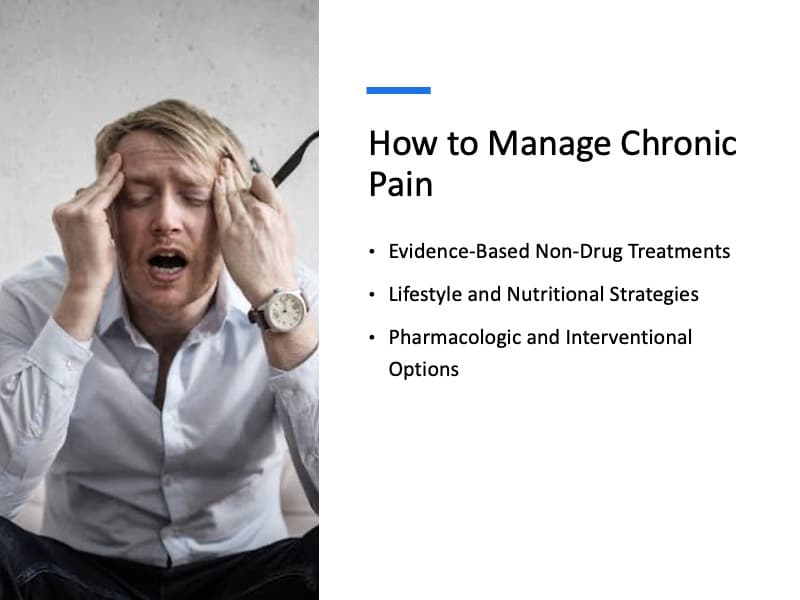
Managing chronic pain isn’t about finding a single cure—it’s about building a personalized, sustainable strategy that reduces discomfort, restores function, and improves quality of life.
Because chronic pain often stems from multiple causes—structural, neurological, emotional, and lifestyle-related—effective chronic pain relief requires a multifaceted approach.
From physical therapy and non-drug treatments to targeted nutrition, stress reduction, and joint-friendly movement, the key is consistency and customization.
What works for one person may not work for another, which is why trial, error, and professional guidance are often necessary.
Whether you’re newly diagnosed or have been living with pain for years, the strategies below can help you take control, reduce pain, and move forward with strength and confidence.
Evidence-Based Non-Drug Treatments for Chronic Pain Relief
Non-drug therapies are a cornerstone of modern chronic pain management.
While medications may provide short-term relief, long-term chronic pain relief is often more effective when rooted in sustainable, evidence-based practices that address the underlying physical and neurological causes of pain.
Research supports these strategies, which can be used alone or alongside medications to reduce the required dose and minimize side effects.
Physical Therapy
Targeted physical therapy can restore mobility, strengthen weakened muscles, and correct movement imbalances that contribute to chronic pain.
For older adults, physical therapy for seniors offers a safe and effective way to manage chronic pain by improving mobility, strength, and joint function.
Therapists often design custom routines involving stretching, strengthening, posture retraining, and aerobic conditioning to address specific pain generators—especially for back, neck, and joint issues.
In my own experience, physical therapy has been especially effective in managing chronic pain related to my ankles, shoulders, and back.
By focusing on proper movement patterns and improving joint mobility, I’ve been able to reduce strain on overworked areas and support more balanced muscle function throughout my body.
As my mobility improved, I noticed a significant decrease in overall pain—proving how powerful movement retraining and biomechanical efficiency can be for long-term pain relief.
Mindfulness and Meditation
Mind-body therapies like meditation, prayer, deep breathing, and progressive muscle relaxation help quiet the nervous system.
These tools reduce pain perception by lowering stress, calming inflammation, and shifting attention away from discomfort.
Studies show mindfulness-based stress reduction (MBSR) improves quality of life for people living with chronic pain.
Biofeedback Therapy
Biofeedback uses real-time electronic feedback to help individuals gain awareness of and control over physiological processes like muscle tension, heart rate, and breathing.
By learning to consciously relax these systems, many people reduce tension-related pain such as chronic headaches, TMJ, or back pain.
Transcutaneous Electrical Nerve Stimulation (TENS)
TENS units deliver low-voltage electrical pulses to specific nerves to disrupt pain signaling.
This technique can offer safe, drug-free relief for localized pain issues and is often used during physical rehabilitation.
The TheraBody PowerDot is my favorite tool for TENS therapy at home. This device can perform both EMS and TENS therapy and provides portable pain relief power.
Acupuncture
A core practice of Traditional Chinese Medicine, acupuncture stimulates specific points on the body to influence pain pathways and reduce inflammation.
A growing body of evidence supports its use in treating conditions like chronic back pain, osteoarthritis, and tension headaches (NCCIH, 2022).
Massage Therapy
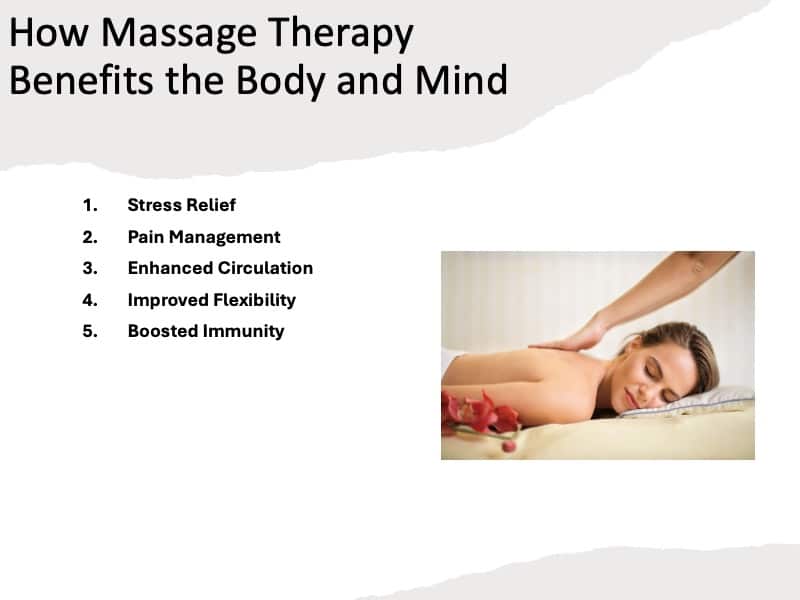
There are many benefits of massage therapy, and reducing chronic pain is certainly one of the most prominent.
Therapeutic massage increases circulation, relaxes tight muscles, improves lymphatic flow, and stimulates endorphin release—all of which play a key role in chronic pain relief.
It’s especially effective for conditions like myofascial pain syndrome, fibromyalgia, and muscular recovery following injury or overuse.
In my own recovery routines, self-massage tools like foam rollers, lacrosse balls, and percussive massage guns (such as the Theragun or Hypervolt Go 2) have been incredibly valuable.
These tools allow for consistent, targeted soft tissue work—especially in hard-to-reach or overused areas like the calves, traps, and glutes.
Foam rolling has helped improve my mobility and reduce post-training stiffness, while percussive massage gun therapy offers a quick and powerful way to reduce localized muscle tension and boost recovery.
Incorporating self-massage therapy into a daily or weekly routine is a simple but effective strategy to reduce chronic pain, improve muscle balance, and provide DIY joint pain relief—especially when done alongside physical therapy or strength training.
Cognitive Behavioral Therapy (CBT)
CBT helps reframe negative thought patterns that can amplify pain and worsen emotional distress.
It also teaches practical coping strategies to improve function and reduce the emotional toll of living with chronic pain.
This approach is often recommended for conditions like fibromyalgia, migraines, and chronic back pain.
Chiropractic and Manual Therapies
Spinal manipulation and joint mobilization by trained professionals may improve alignment and reduce pain in the musculoskeletal system.
Chiropractic care is especially effective for chronic lower back and neck pain when combined with exercise and other therapies.
There are also benefits of chiropractic care for TMJ and many other joint issues as well.
Cupping Therapy
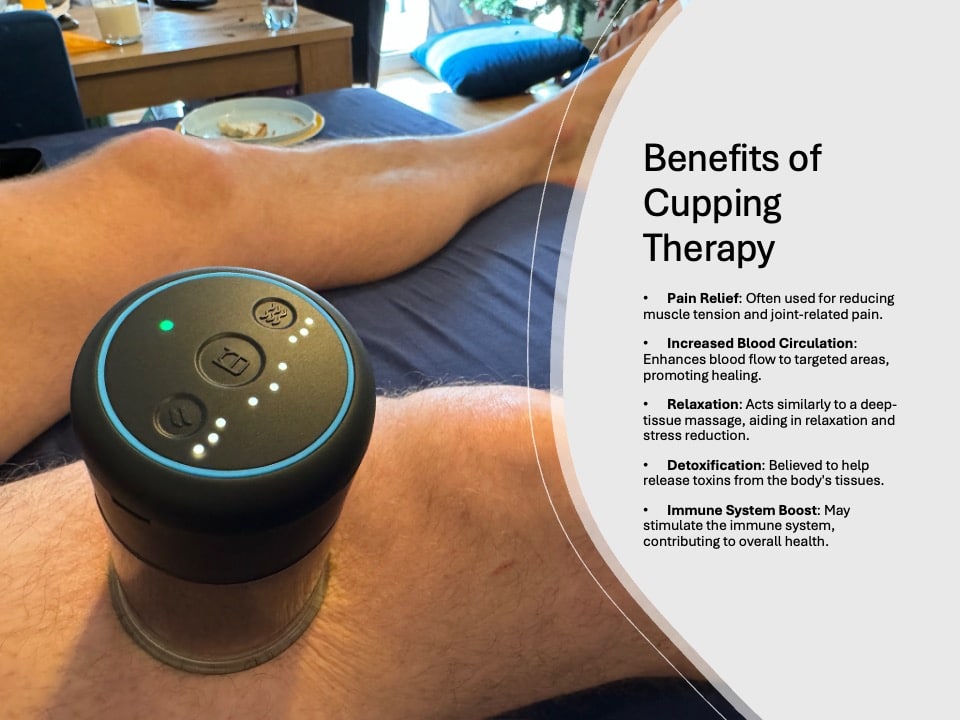
Cupping therapy has gained momentum as a non-pharmacological treatment for chronic pain, especially among athletes and active individuals.
By creating suction on the skin’s surface, cupping helps draw blood to targeted areas, improve lymphatic drainage, and reduce muscle and fascial tension—all of which can support pain relief and recovery.
A 2020 systematic review and meta-analysis published in The Journal of Pain analyzed 18 randomized controlled trials and found that cupping therapy produced significant short-term reductions in pain intensity and disability when compared to no treatment (Cramer et al., 2020).
Although the evidence showed smaller effects compared to sham or other active treatments, the findings support cupping as a potentially effective strategy for short-term chronic pain relief—especially when integrated into a broader pain management plan.
Personally, I’ve had great success using the Therabody Theracups for at-home cupping therapy.
These motorized cups allow me to safely and effectively perform cupping on myself, especially around stiff or overworked joints.
I’ve found them incredibly useful for reducing swelling, enhancing blood flow, and relieving tension in the muscles surrounding my knees, shoulders, and ankles.
When used consistently, they’ve helped improve joint mobility and reduce the feeling of deep stiffness that often builds up from years of training and competition.
DIY cupping tools like these make it easier to stay proactive in your recovery routine, especially when you don’t have access to hands-on therapies.
While cupping may not be a standalone solution, it can be a powerful complementary tool in your chronic pain management strategy.
Last update on 2025-04-15 / This article includes affiliate links/Images via Amazon Product Advertising API. I may earn commissions on purchases made through these links.
Essential Oils
Essential oils can be a valuable complementary therapy for chronic pain—especially when used to reduce stress, promote relaxation, and ease localized discomfort.
These plant-based oils contain compounds that, when applied topically or inhaled, may influence pain perception, reduce inflammation, and calm the nervous system.
I’ve personally found peppermint and eucalyptus oils effective, and using essential oils for back pain has been particularly beneficial.
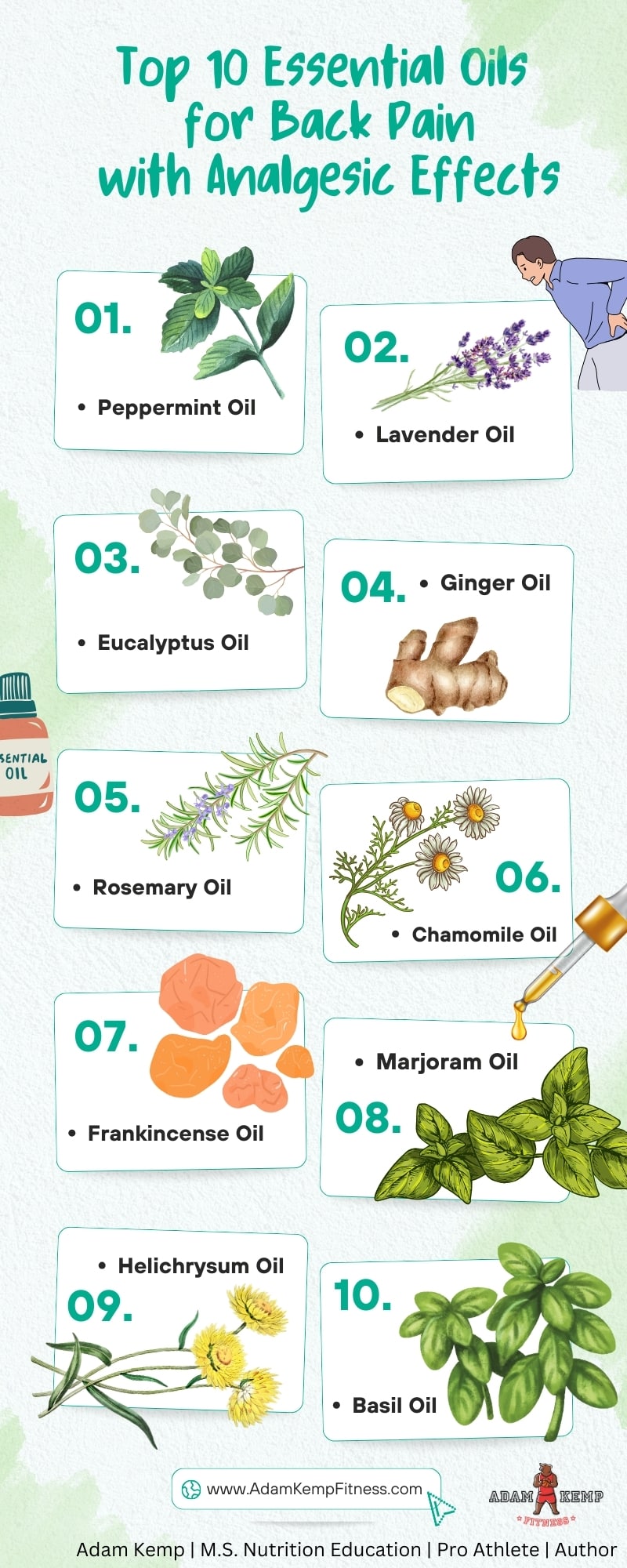
I typically dilute a few drops in a carrier oil like coconut or jojoba and apply them before self-massage or foam rolling.
While subtle, they’ve helped enhance relaxation and reduce post-training soreness.
Used consistently alongside physical therapy or mobility work, essential oils can be a low-risk, supportive addition to your chronic pain relief routine.
Just make sure to choose therapeutic-grade products and patch test for skin sensitivity.
Most Common Essential Oils for Pain Relief:
- Peppermint Oil: Contains menthol, which provides a cooling sensation and has mild analgesic and anti-inflammatory effects. It’s especially useful for tension headaches, sore muscles, and joint stiffness.
- Lavender Oil: Known for its calming properties, lavender may also reduce pain intensity and anxiety associated with chronic pain. It’s frequently used in sleep support routines and relaxation therapies.
- Eucalyptus Oil: Has anti-inflammatory, antispasmodic, and decongestant properties. It’s often used for arthritis, nerve pain, or respiratory-related chest discomfort.
- Rosemary Oil: May help reduce muscle soreness and improve circulation, making it a good option for athletes or those recovering from injury.
- Frankincense Oil: Traditionally used for joint pain and inflammation, frankincense may help calm nerve pain and support immune function.
Lifestyle and Nutritional Strategies for Chronic Pain Relief
Lifestyle habits have a powerful influence on how chronic pain develops, persists, and responds to treatment.
While it’s easy to focus solely on therapies and medications, the everyday choices you make—how you move, eat, sleep, and recover—can either reduce inflammation and promote healing or contribute to a worsening pain cycle.
Anti-Inflammatory Nutrition
What you eat plays a crucial role in modulating pain.
Diets high in processed foods, trans fats, and refined sugars can trigger chronic inflammation, which may worsen conditions like arthritis, back pain, or fibromyalgia.
On the other hand, nutrient-rich, anti-inflammatory foods can support the body’s natural healing processes.
In my own life, shifting toward whole-food nutrition has been one of the most effective long-term strategies for managing chronic pain.
I prioritize foods like leafy greens, wild-caught salmon, berries, turmeric, ginger, and healthy fats from sources like olive oil and avocados.
These nutrients help lower systemic inflammation and support joint, muscle, and nerve health.
Proper nutrition is also vital for maintaining a healthy weight.
Excess body weight increases stress on joints and connective tissue, especially in the hips, knees, and lower back, often amplifying pain and reducing mobility.
Hydration and Recovery
Chronic dehydration can increase joint stiffness, reduce circulation, and hinder muscle recovery.
Staying well-hydrated supports cellular repair, nutrient transport, and the removal of metabolic waste—key for anyone battling ongoing pain or inflammation.
I’ve made hydration a cornerstone of my daily recovery routine, especially after practices or physical therapy sessions.
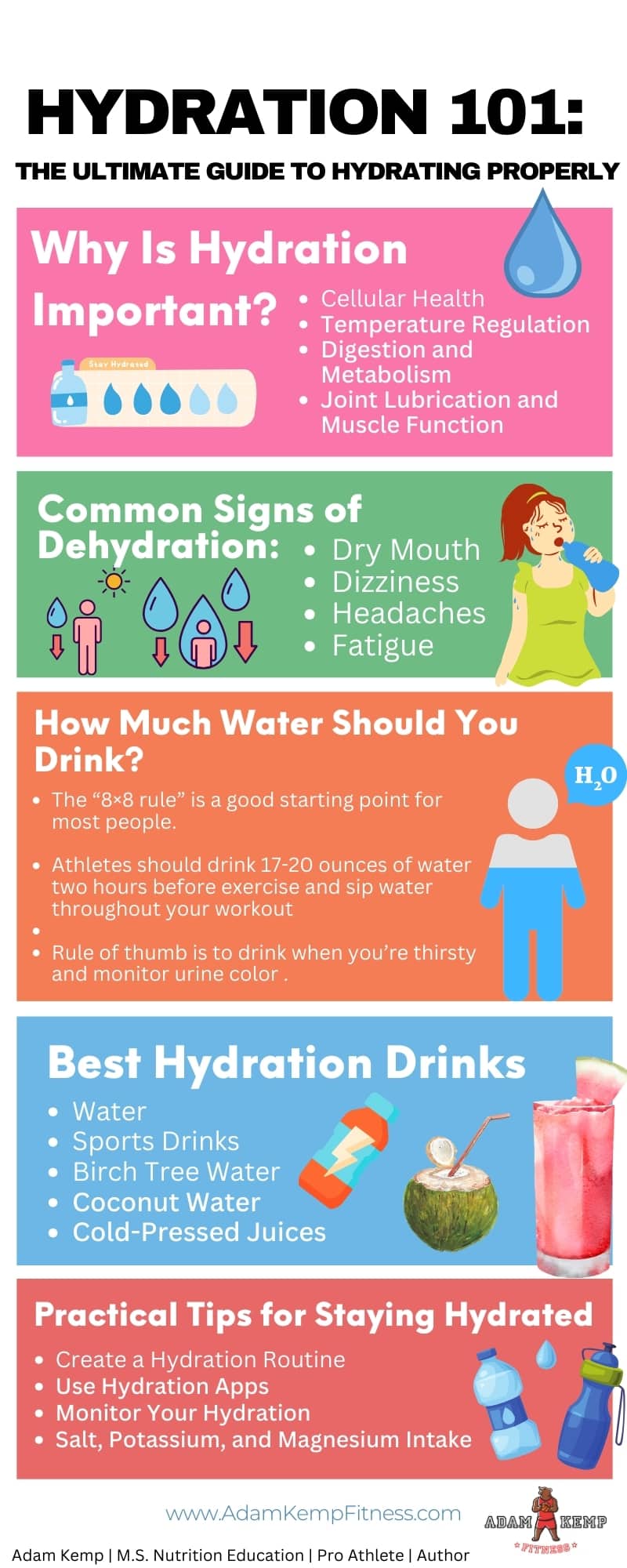
Sleep Hygiene
Quality sleep is essential for physical healing and pain regulation.
Poor sleep increases pain sensitivity and reduces the body’s ability to recover.
Aim for 7–9 hours of consistent, restful sleep per night, and develop a wind-down routine that limits blue light exposure, caffeine, and mental stimulation in the evening to get better sleep.
Movement and Joint-Friendly Activity
Daily low-impact activity is a powerful way to break the pain-inactivity cycle.
I’ve found that walking, swimming, and mobility circuits help keep my joints lubricated and reduce stiffness without adding excessive stress.
These gentle forms of movement stimulate blood flow, support muscular balance, and maintain tissue elasticity.
Stress Management and Breathwork
Chronic stress elevates cortisol levels, which can worsen inflammation and pain perception.
Incorporating relaxation techniques—such as diaphragmatic breathing, guided imagery, or prayer—can help downregulate the nervous system and improve resilience.
Even 5–10 minutes of daily breathwork or prayer has helped me stay more centered, focused, and pain-tolerant through long seasons.
Avoiding Harmful Habits
Smoking, excessive alcohol consumption, and a sedentary lifestyle all contribute to systemic inflammation and impaired recovery.
If you’re serious about chronic pain relief, replacing these habits with healthier routines should be a top priority.
Start with small, manageable changes—like a daily mobility routine or a weekly meal prep habit—and build from there.
Pharmacologic and Interventional Options for Chronic Pain
While lifestyle changes, physical therapy, and alternative treatments are essential components of chronic pain relief, there are times when medication and interventional procedures are necessary to regain function and improve quality of life.
Used responsibly, these options can provide meaningful relief—especially when pain is severe, persistent, or resistant to other therapies.
Non-Opioid Pain Medications
Nonsteroidal anti-inflammatory drugs (NSAIDs) like ibuprofen or naproxen are commonly used for musculoskeletal pain and inflammation.
Acetaminophen is another over-the-counter option for general pain relief.
For nerve-related pain, medications such as gabapentin, pregabalin, and certain antidepressants (like amitriptyline or duloxetine) can help reduce pain signals without the risks associated with opioids.
Muscle relaxants may also be helpful when chronic pain stems from spasms or tension, particularly in the back or neck. These medications can be effective when used for short durations and in conjunction with physical therapy.
Topical Therapies
Topical treatments such as lidocaine patches or capsaicin cream offer localized relief with fewer systemic side effects. These are especially useful for joint pain, neuropathic pain, or areas of soft tissue inflammation where oral medications may not provide targeted relief.
When Opioids Are Considered
Although opioids are sometimes prescribed for chronic pain, they should never be the first-line approach.
These medications carry a high risk for tolerance, dependence, and side effects, and are generally reserved for acute flares, post-surgical recovery, or terminal conditions where other treatments have failed.
If opioids are prescribed, they should be used at the lowest effective dose, for the shortest possible duration, and in combination with other therapies—not as a standalone solution.
Injection-Based Therapies
When the source of pain is well-defined, interventional treatments like trigger point injections, epidural steroid injections, or nerve blocks can provide fast-acting relief.
These procedures target inflammation and nerve irritation directly at the source, allowing patients to return to physical therapy or activity with less pain.
Two regenerative options that are becoming increasingly popular for chronic pain relief—especially in orthopedics and sports medicine—are Platelet-Rich Plasma (PRP) and hyaluronic acid injections.
PRP therapy involves injecting a concentrated solution of the patient’s own platelets into the affected area to stimulate tissue healing and regeneration.
I’ve personally used PRP injections on two separate occasions: first to help heal an avulsion fracture in my right ankle, and more recently to support recovery following my meniscus repair surgery in late 2024.
Although I am still rehabbing and healing the meniscus tear, PRP definitely played a key role in accelerating healing, reducing inflammation, and improving my ankle joint function—especially when combined with rest and progressive rehab.
Hyaluronic acid injections, commonly used to treat osteoarthritis pain in the knees, works by lubricating the joint and improving shock absorption.
This treatment can be especially beneficial for individuals with joint stiffness and cartilage degeneration who are not yet candidates for surgical intervention.
By increasing synovial fluid viscosity, these injections help cushion the joint and improve mobility with less pain during activity.
While results from injection-based therapies vary, they can serve as an important part of a broader chronic pain management plan—particularly when paired with movement-based therapies and lifestyle changes.
Always consult with a qualified provider to determine whether these treatments are appropriate for your condition and goals.
Radiofrequency Ablation
Radiofrequency ablation (RFA) is a minimally invasive procedure that uses heat to disable specific nerves from sending pain signals.
It’s commonly used for chronic spine or joint pain, and results may last several months or longer. I’ve seen athletes and active individuals return to high levels of performance after successful RFA treatment.
Spinal Cord Stimulation
In more advanced cases of chronic nerve pain, spinal cord stimulators may be implanted to modify pain signals before they reach the brain.
This approach is typically reserved for severe, treatment-resistant cases and requires careful evaluation and trialing before permanent implantation.
Cannabidiol (CBD) for Chronic Pain Relief
CBD, a non-psychoactive compound derived from the cannabis plant, has become an increasingly popular option for managing chronic pain—particularly among individuals seeking natural, non-opioid alternatives.
Unlike THC, CBD does not produce a “high,” but it may interact with the body’s endocannabinoid system to help regulate pain, inflammation, and immune response.
Research suggests that CBD may reduce pain signaling and inflammation in conditions such as arthritis, neuropathy, and musculoskeletal pain.
While more high-quality human trials are still needed, many people report meaningful relief when using CBD oil, creams, or capsules as part of a broader chronic pain management strategy.
I’ve personally experimented with CBD topicals and tinctures during intense training phases and recovery periods.
When used alongside physical therapy, good sleep, and nutrition, CBD can offer subtle but noticeable relief—especially in calming inflammation and easing localized joint or muscle pain.
I’ve found CBD creams particularly effective when applied to sore knees, shoulders, or my lower back after long practices or travel.
As with any supplement, quality matters.
Choose full-spectrum or broad-spectrum products that are third-party tested for purity and potency, and always consult with your healthcare provider—especially if you’re taking other medications or have underlying health concerns.
Related Reading: How Long Does it Take for CBD to Work for Pain?
Final Thoughts: Actionable Advice for Living with Chronic Pain
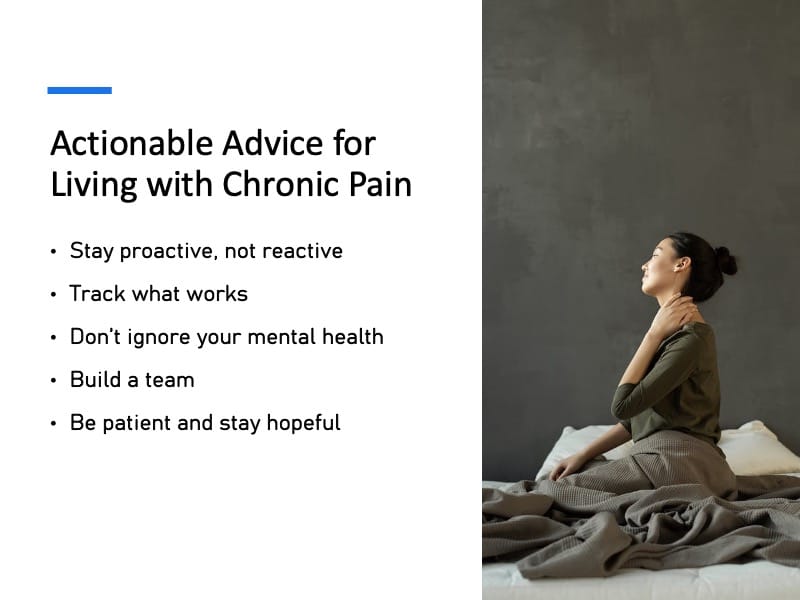
Chronic pain can feel overwhelming, but it doesn’t have to define your life.
While there may not be a single solution or overnight fix, the combination of physical therapy, smart lifestyle choices, non-drug therapies, and targeted medical interventions can offer real, lasting relief.
Effective chronic pain management is about creating a personalized, flexible strategy that evolves with your body’s needs over time.
From my own experience navigating serious injuries and the daily wear and tear of professional basketball, I’ve learned that consistency, self-awareness, and a willingness to try different approaches are key.
What worked for me—whether PRP injections, CBD topicals, physical therapy, or mobility work—might look different for you.
But the goal is the same: reduce pain, restore movement, and get back to living a life you enjoy.
Here are a few actionable tips to keep in mind:
- Stay proactive, not reactive. Don’t wait for pain to become unbearable—build habits that reduce tension, inflammation, and imbalances before they escalate.
- Track what works. Keep a journal of therapies, exercises, foods, or treatments that improve or worsen your symptoms. It’ll help you refine your pain relief strategy.
- Don’t ignore your mental health. Chronic pain and mental well-being are inseparable. Meditation, therapy, prayer, and stress reduction are just as important as physical care.
- Build a team. Physical therapists, physicians, nutritionists, and other professionals can help guide you and adjust your plan when needed.
- Be patient and stay hopeful. Progress with chronic pain is often non-linear, but every small gain matters.
Chronic pain may be part of your story—but it doesn’t have to control the narrative. With a science-backed, whole-body approach, long-term relief is possible.

